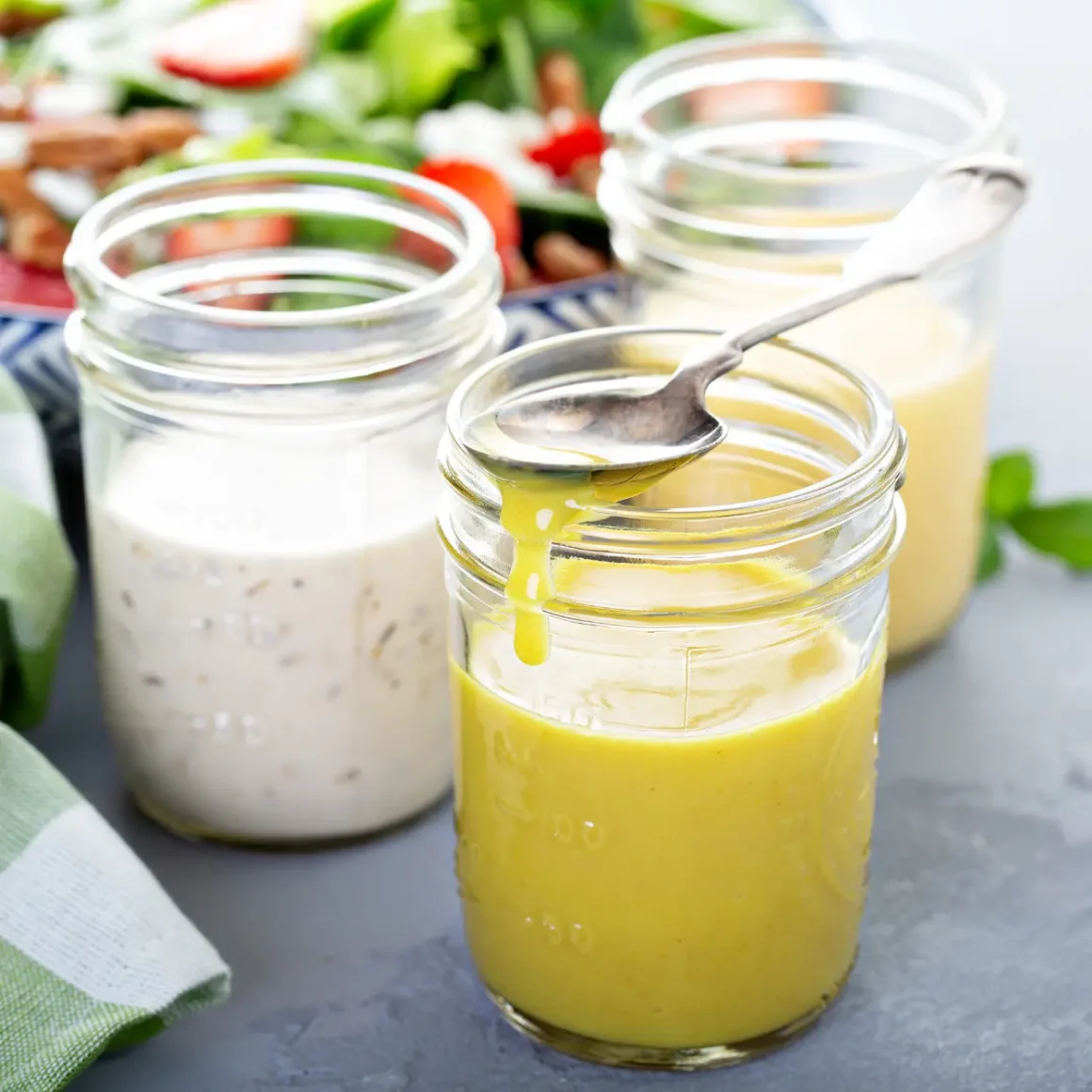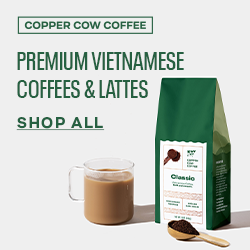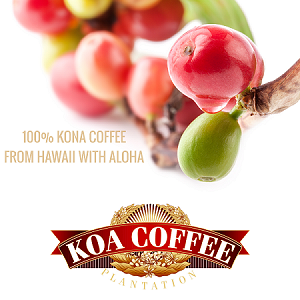As coffee culture continues to evolve, aficionados and amateurs alike are always on the hunt for the next unique twist to elevate their daily brew. Enter mayo in coffee, a trend that might initially seem like a joke but has people talking, experimenting, and yes, even sipping. This intriguing blend is evoking both intrigue and skepticism, propelling coffee enthusiasts into a world of culinary experimentation.
Is mayonnaise in coffee a thing? Indeed, it is. But before you recoil at the thought, it’s important to note that with the right techniques, the correct type of mayo, and perfect ratios, this unusual pairing has the potential to be more palatable than you might think. In the following sections, we delve into the art and science of making the perfect mayo-infused cup of coffee—from choosing high-quality, citrus-based mayo to mastering the brewing process and tweaking ratios to find your ideal blend. So, is it time to swap out your traditional cream and sugar? That’s a conversation waiting to brew.
Mayo in Coffee: Key Takeaway
- Unconventional Blend: Mayo in coffee emerged as a divisive trend, with some appreciating its unique creaminess, while others felt it disrupted traditional coffee flavors.
- Expert Exploration: Coffee aficionados, including Maciej Kasperowicz, have personally tested the blend, often concluding its appearance and taste to be somewhat off-putting, especially with mayo strands evident in the brew.
- Public Sentiments: The trend generated a significant buzz on social media, with viral videos and reviews both praising and critiquing the combination, reflecting the public’s divided stance.
- Brewing Techniques Matter: The success of mixing mayonnaise in coffee can depend on various factors including the quality of mayo, its blending method, and choosing between hot or cold coffee to ensure the best taste experience.
- Cultural Curiosity: Beyond personal preferences, the mayo in coffee trend poses broader cultural questions, prompting discussions about its longevity and whether it’s a fleeting fad or a fixture in our future coffee culture.
Mayonnaise in Coffee: The History and Origins

Let’s delve into one of the most debated yet recent food trends that has been making waves—mayonnaise in coffee. This controversial pairing has coffee aficionados talking, and social media buzzing. But where did this practice begin, what was the motivation behind it, and how has it evolved over time? Let’s take a closer look.
Tracing the Roots: Where Did It Begin?

The infusion of mayo in coffee is far from a time-honored tradition. In fact, it’s a fairly modern culinary experiment with no historical documentation to support its longevity.
- Modern Emergence: It has only started to catch the public eye in the last few years.
- Public Opinion: Reactions range from curious experimentation to downright revulsion.
- NFL Influence: Tennessee Titans quarterback Will Levis brought considerable attention to the practice when he showcased his mayo-coffee routine on TikTok, opening up a conversation on a larger scale. (1)
The mayo-coffee pairing is a recent phenomenon and is largely attributed to modern-day curiosity and social media exposure.
Why Mayo? The Initial Inspiration
The inception of this unusual coffee add-on remains somewhat mysterious, but there are some clues to its origin.
- Alternative to Dairy: People are always on the lookout for rich, fatty substitutes for traditional cream or milk. Mayo, being high in fat and calories, serves as a distinct choice.
- Influence of Personal Tastes: Will Levis, for instance, credits both his mother and his school lunch lady for his love for mayonnaise, and the brand Hellman’s in particular.
- Serendipity: Levis only started adding mayo to his coffee because cream and sugar were unavailable at one fateful breakfast, as revealed in a conversation with USA Today.
So, while mayo may not be everyone’s first choice, it’s clear that personal preferences and availability can make it a viable option for some.
Adoption and Evolution: From Oddity to Beverage Trend
From its obscure origins to its present-day buzz, the practice has gone through an interesting journey.
- Social Media Impact: The initial disdain met by the trend began to wane as it gained more exposure, largely due to social media platforms.
- Corporate Interest: Hellman’s, the brand of mayo used by Levis, offered him a lifetime supply, marking the brand’s first-ever such deal.
- Expanding Endorsements: Apart from Hellman’s, Levis has also inked deals with other companies, showing that the trend may have market viability.
Ultimately, while it might have started as a joke or a curious experiment, the trend of adding mayonnaise in your coffee has now evolved to become a talking point among coffee drinkers and even attracted corporate attention.
Health Implications: Is It Good For You?
The subject of adding mayonnaise to your coffee has captivated public attention, with debates ranging from the unique flavor it brings to the health consequences it could entail. But beyond the sensory experience, it’s essential to delve into the nutritional and health implications of this novel combination.
Nutritional Breakdown: Mayo vs. Traditional Creamers

The addition of any ingredient to coffee should not only elevate the flavor but should also align with nutritional goals. Let’s compare the nutritional profiles of mayonnaise and traditional coffee creamers.
- Calories: Mayonnaise is calorie-dense, with about 90-100 calories per tablespoon, whereas traditional creamers often contain fewer calories, especially if they’re plant-based or low-fat.
- Fat Content: Mayo primarily consists of fat, providing a higher concentration of fats than most creamers. This is a point to consider for those monitoring their fat intake.
- Sugar: Many traditional creamers contain added sugars to sweeten the coffee. In contrast, mayonnaise doesn’t typically contain sugar, making it an option for those avoiding added sugars.
- Nutrients: Creamers often come fortified with nutrients like calcium and vitamin D. Mayo doesn’t offer this advantage but does provide some proteins and vitamins in smaller amounts.
When it comes to nutritional content, the choice between mayonnaise and traditional creamers should be influenced by your dietary needs and health goals.
Potential Health Benefits and Concerns

While the discussion about the tastiness of mayo in coffee is subjective, the health implications are a more quantifiable aspect that needs addressing.
- Energy Boost: According to Leslie Bonci, adding mayo could provide supplemental energy due to its fat content. This makes it akin to other high-fat additives like butter.
- High Caloric Intake: Mayo is rich in calories, making it a less ideal option for those aiming to reduce their caloric intake. (2)
- Texture and Consistency: Mayo has a thick viscosity that might not mix well in hot beverages, potentially leading to an inconsistent texture that some may find off-putting.
- Controversial Health Status: Mayonnaise’s health merits are still up for debate, adding an extra layer of consideration for health-conscious consumers.
While mayo could add a unique twist to your coffee, the potential health benefits and concerns should be critically weighed before making it a regular addition.
Dietary Implications: Keto, Vegan, and More
The dietary suitability of adding mayo to coffee can vary greatly depending on one’s dietary restrictions or preferences, such as keto, vegan, or calorie-counting diets.
- Keto-Friendly: Those following a ketogenic diet may find mayo to be a suitable addition due to its high-fat content, similar to the often-used butter or buttermilk.
- Not Vegan-Friendly: Traditional mayonnaise contains eggs, making it unsuitable for vegan diets unless a plant-based alternative is used.
- Calorie Counting: For those tracking calories, mayo’s high caloric content might be a deal-breaker, making low-calorie creamers a better option.
- Lactose Intolerance: For individuals with lactose intolerance, mayonnaise could serve as a dairy-free alternative to traditional creamers, provided that no dairy-based mayo is used.
While the concept of adding mayo to coffee can be a fun culinary experiment, its suitability largely depends on individual dietary needs and health objectives.
The Taste Test: Describing the Flavor
In the world of coffee experimentation, mayo as an additive has become a topic of fervent discussion. Known for its complex flavor profiles, coffee often takes on new dimensions with different ingredients, a phenomenon closely observed by the team at The Coffee Guru. Mayonnaise adds a creamy yet distinctively mayo-like taste to the brew, eliciting mixed reactions.
Texture and Mouthfeel: Is It Creamier?

Texture often plays an equally important role as flavor in the overall enjoyment of a beverage. For those curious about whether mayo makes coffee creamier, let’s delve into the details.
- Lumpy Texture: The high acidity levels in hot coffee can cause the mayo to clot, giving the coffee a less-than-smooth texture.
- Cold Brew Compatibility: Many people find that mayo seems to mix better in cold brew coffee, avoiding the clotting issue.
- Caloric Content: It’s vital to recognize that the creaminess comes at a cost—increased calories, sodium, and fat.
While mayo may offer some level of creaminess, it’s crucial to note that it’s often accompanied by a less-than-ideal texture and an uptick in nutritional values that aren’t health-friendly.
Flavor Enhancements and Pairings

If you’re already on board with mayo in your coffee, you might wonder what else you can add to make the experience more enjoyable or at least palatable.
- Type of Mayo: Experimenting with different types of mayo could lead to varying flavors.
- Sweeteners and Spices: Adding sweeteners like sugar or honey, or spices like cinnamon, can help balance the mayo’s dominating flavor.
- Alternative Brewing Methods: AeroPress or French Press methods may offer a different interaction between the mayo and the coffee, possibly improving the taste.
When it comes to enhancing the mayo-coffee experience, the possibilities are as endless as your own flavor preferences.
Personal Experiences: Love It or Hate It?
As with any trend, personal experiences with mayo in coffee are mixed. The concoction has its staunch supporters and fervent detractors.
- Divisive Opinions: Some people relish the added creaminess and unique flavor blend, while others categorically dismiss it as distasteful.
- Traditionalists: Many coffee enthusiasts prefer to stick with familiar coffee add-ins and see no need to venture into mayo territory.
Mayo in coffee is certainly not for everyone. Individual preferences largely dictate whether it’s a culinary revelation or a gastronomic disaster.
Making the Perfect Cup: Tips and Tricks
Embarking on the unconventional journey of blending mayo in coffee? Crafting the perfect cup is an art form that comes with its own set of rules and nuances. Below, we’ll explore various aspects—from selecting the right mayo to finessing the brewing technique—that can help make your adventurous brew not just palatable but even enjoyable.
Choosing the Right Mayo: Brands and Types

When taking the plunge to combine mayo and coffee, the type and brand of mayonnaise you choose can greatly influence the end result.
- Quality Matters: Generic or low-grade mayos often contain preservatives and artificial flavors that could adversely affect your coffee’s profile.
- Ingredient List: Look for a mayo brand that offers a simple ingredient list, free of unnecessary additives.
- Citrus Over Vinegar: Preferably, choose a mayo made with lemon or lime juice rather than vinegar, as the citrus better complements the coffee flavors.
Choosing a high-quality, simple, and citrus-based mayo can be the first step toward creating a harmonious cup.
Brewing Techniques for Best Results

The brewing process plays an essential role in determining the taste and texture of your mayo-infused coffee.
- Whisking is Key: To prevent the mayo from separating, make sure to whisk it well with your coffee.
- Temperature Control: Be cautious with hot coffee. The acidity in hot brews can make the mayo curdle, thus ruining the taste.
- Opt for Cold Brew: Cold brew coffee is generally less acidic and allows the mayo to mix more seamlessly.
Adopting the right brewing techniques can significantly elevate the overall experience of mixing mayo in coffee.
Tweaking Ratios: Finding Your Perfect Blend
Discovering the ideal proportion of mayo to coffee can be a subjective but crucial aspect of this culinary experiment.
- Start Small: As a rule of thumb, begin with a teaspoon of mayo for an 8-ounce coffee cup.
- Texture Conscious: Be mindful of the coffee’s consistency; using too much mayo can make it overwhelmingly thick.
- Adjust to Taste: As you get accustomed to the new flavor, you may want to adjust the ratio to better suit your personal preference.
Essentially, it’s all about balancing the elements to suit your taste buds, making for a uniquely tailored cup every time.
Public Reaction: Embrace or Pushback?
In the realm of coffee experimentation, the introduction of mayo as a potential add-in has been a catalyst for both enthusiasm and skepticism among the public. While some embrace it as a quirky yet innovative twist, others question the purpose of introducing such an unconventional element into their beloved morning brew. This section dives into the various reactions from social media, experts, and cultural lenses.
Social Media Buzz: Viral Videos and Reviews
When it comes to creating viral food trends, social media platforms are a force to be reckoned with. The mayo-in-coffee phenomenon has found its way into countless viral videos and reviews, and public opinion is mixed, to say the least.
- Viral Videos: From influencers boldly taking their first sips to comedians parodying the trend, videos involving mayo and coffee have attracted millions of views.
- User Reviews: Across platforms, reviews are divided. While some find the creaminess appealing, others are repulsed by the unappetizing visual of “mayo strands” floating in their cup.
- Public Polls: Several polls have emerged on social media platforms where users can vote on whether the mayo-coffee blend is a hit or miss, and the results are often evenly split.
In the social media landscape, mayo in coffee has undeniably stirred the pot, leading to a divisive but highly engaged conversation about this adventurous pairing.
Expert Opinions: Baristas and Coffee Connoisseurs Weigh In
Beyond the everyday coffee drinker, what do the experts think? Certified coffee graders and baristas offer more grounded perspectives, infusing the discussion with professional expertise.
- Barista Takes: Many baristas have experimented with the mayo-coffee combo, and while some find the idea imaginative, they often emphasize its limitations in terms of flavor and texture.
- Coffee Aficionados: Like Maciej Kasperowicz, some experts have personally sampled the concoction and have voiced similar concerns—namely, that the taste is not particularly appealing and the appearance is a turn-off. (3)
- Critics’ Corner: Renowned coffee critics have largely stayed away from endorsing the trend, citing the conflicting textures and flavors as the main detractors.
In summary, the expert consensus tilts toward skepticism, with most professionals advising against making mayo-infused coffee a regular part of your caffeine routine.
The Cultural Implications: A Fad or Here to Stay?

Every trend prompts the question—will it stick around or fade away? The mayo-in-coffee trend is no exception, and it’s important to explore its long-term cultural viability.
- International Perspectives: While the mayo trend is mainly Western, it’s worth noting that similar blends, like egg coffee in Vietnam, do have a cultural foothold.
- Consumer Behavior: Based on purchasing habits and café menu adaptations, it seems that the trend hasn’t yet gained significant traction outside of social media.
- Health Implications: As health consciousness rises, the high caloric and fat content of mayo could prevent it from becoming a mainstay in the average diet.
While it’s too early to definitively conclude whether mayo in coffee is a fleeting fad or a trend with staying power, initial indications suggest it may struggle to secure a lasting place in coffee culture.
The Guru’s Take on Mayo in Coffee
Here, the team at The Coffee Guru unpack the complexities of this unusual pairing, while also offering alternatives to ensure every sip you take is sheer perfection. Join us as we explore the harmonies, the clashes, and the endless pursuit of the ultimate brew.
Understanding the Mayo-Coffee Conundrum
The team at The Coffee Guru has always been intrigued by novel coffee pairings. At first glance, merging mayo’s rich blend of oil, egg yolk, and either vinegar or lemon juice with a cup of freshly brewed coffee seems audacious. However, this attempt at fusion is akin to uniting oil and water; they resist coalescence. The reasons for this resistance are multi-fold:
- Aesthetic Appeal: Coffee’s inherent acidity, when melded with mayo’s oils, produces an appearance disturbingly similar to spoiled milk, hardly the visual appeal a coffee enthusiast seeks.
- Taste Dilemma: Our empirical tastings reflected a consensus – coffee infused with mayo begets a flavor profile that can be jarring. The distinct elements from mayo simply don’t complement the natural profile of coffee, often leaving an uncanny aftertaste.
- Scientific Perspective: Coffee, due to its natural acidity, induces an emulsion effect when paired with mayo. This leads to a less-than-harmonious blend and a texture that many find off-putting.
In essence, while culinary experimentation is always encouraged, the mayo-coffee duo might not be a worthy venture for the discerning palate.
Elevating Your Brew: Alternative Add-ins
For those looking to elevate their coffee experience, myriad alternatives await that not only enhance flavor but also ensure a delightful texture. Consider the following:
- Dairy and Non-Dairy Creaminess:
- Real butter, known for its velvety smoothness, is a key ingredient in creating the rich and creamy texture of butter coffee.
- Non-dairy milk varieties like almond, soy, and oat milk for those with lactose sensitivities or personal preferences. Each lends a distinct flavor, ranging from nutty to subtly sweet.
- Flavor Boosters:
- Spices: Think cinnamon, nutmeg, or a touch of vanilla extract. Check out our article on Spicy Coffee for more ideas!
- Syrups: Caramel, hazelnut, or peppermint can impart a luxurious sweetness.
- Sweetness Enhancers: Traditional sugar and chocolate are evergreen choices for those looking for richness.
While these options undeniably enhance the coffee experience, it’s paramount to remember that some come with added calories and sugars. Thus, enjoy your enhanced brew responsibly and always be open to exploring healthier alternatives.
Conclusion
As we’ve traversed the intriguing landscape of mayo in coffee, it’s evident that this unconventional pairing has brewed a pot full of mixed opinions and spirited debates. From the curious palate of social media tasters to the discerning analysis of coffee connoisseurs, the range of reactions is as varied as the beans used in your morning brew. While some find the added creaminess and unique taste a refreshing change, others argue that mayonnaise in coffee disrupts the time-honored flavors and even compromises the visual appeal.
Experts, too, have ventured into this uncharted territory, scrutinizing the taste, texture, and scientific compatibility of the blend. Despite these varied perspectives, one thing is consistent: the conversation around this trend is far from settled. The debate extends beyond personal preference to include broader cultural implications, as people ponder whether this trend is a passing fad or a culinary experiment here to stay.
Whether you consider this trend a welcome innovation or a misguided experiment, it’s indisputable that mayo in coffee has become a topic that’s stirred more than just our morning cups. It’s stirred our curiosity, our taste buds, and most importantly, a conversation that seems poised to continue brewing for some time to come.
FAQ
Are there any health benefits to adding mayo to coffee?
Adding mayo to coffee increases caloric, sodium, and fat content; it is not considered a health-conscious choice.
How does mayo in coffee compare to traditional creamers in taste?
Mayo in coffee offers a distinct, often divisive flavor profile that many find less appealing than traditional creamers like milk or cream.
Which brands of mayo work best for coffee?
High-quality mayonnaise with simple ingredients and lemon or lime juice instead of vinegar tends to blend better with coffee.
Is mayo in coffee a global trend or localized to specific regions?
Mayo in coffee appears to be more of a divisive social media trend rather than a globally or regionally established practice.
















